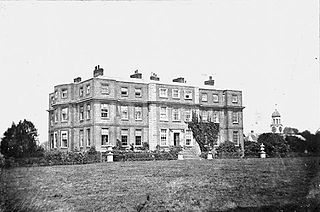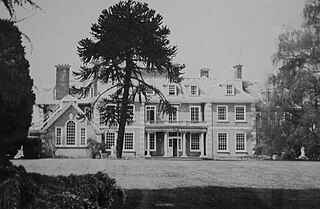
Harwich is a town in Essex, England and one of the Haven ports, located on the coast with the North Sea to the east. It is in the Tendring district. Nearby places include Felixstowe to the northeast, Ipswich to the northwest, Colchester to the southwest and Clacton-on-Sea to the south. It is the northernmost coastal town within Essex.

Thurrock is a unitary authority area with borough status in the English ceremonial county of Essex. It is part of the London commuter belt and an area of regeneration within the Thames Gateway redevelopment zone. The local authority is Thurrock Council.

Dovercourt is a small seaside town in the Tendring district, in the county of Essex, England. It is older than its smaller but better-known neighbour, the port of Harwich, and appears in the Domesday Book of 1086. Today the towns are contiguous.

Hutton is an area of Brentwood in south Essex. It has good links to Central London via Shenfield train station which is just 1 mile (1.6 km) from Hutton. Brentwood town centre lies 3 miles to the west. The area can be split between modest housing estates and the largely affluent Hutton Mount. There are two wards named "Hutton" both in the Borough of Brentwood.

Harwich and North Essex is a constituency represented in the House of Commons of the UK Parliament by Bernard Jenkin of the Conservative Party since its creation in 2010.

Joseph Stanley Holmes, 1st Baron Dovercourt was a British chartered accountant, businessman and Liberal Party politician, who later served as a Liberal National Member of Parliament.

Gidea Hall was a manor house in Gidea Park, the historic parish and Royal liberty of Havering-atte-Bower, whose former area today is part of the north-eastern extremity of Greater London.

Orsett Hall was a 17th-century grade 2 listed building in Orsett, Essex. It was set in 12 acres (4.9 ha) of parkland and was the centre of the Orsett Hall agricultural estate. The house was destroyed by fire on 11 May 2007 and rebuilt in the same style and on the same footprint as the original building in 2009.
Sir Nathaniel Rich (1585–1636) was an English merchant adventurer and politician who sat in the House of Commons at various times between 1614 and 1629.

Windlestone Hall is an early 19th-century country house situated near Rushyford, County Durham, England. It is a Grade II* Listed building.

Woolverstone is a small village and civil parish in Suffolk, England located on the Shotley peninsula. It is situated about 6.4 km (4.0 mi) south of Ipswich, near the southern shore of the River Orwell. In 2005 it had a population of 240, increasing to 265 at the 2011 census.
John Bagshaw was a British Whig property developer and politician.

Harwich and Dovercourt High School is a secondary school and sixth form with academy status, located in Harwich in the English county of Essex. It was named the Sir Anthony Deane School until 1974, and was then known as the Harwich School. The school faced controversy in 2006 when parents campaigned to remove existing Headteacher, Jacky Froggat, over concerns regarding falling standards. She was replaced by Nigel Mountford, who had been serving as the acting head teacher of the Harwich School, Under his leadership the school was transformed into a positive learning atmosphere with a new code of conduct and praise scheme for pupils who perform well, his appointment came just one week after the school was saved from going into special measures, OFSTED reported the school had shown significant improvement.

Widford is a parish of Chelmsford approximately 1.5 miles (2.4 km) south-south-west of the city’s railway station. The current parish boundary encloses a mixed residential, industrial and rural area south of the River Can, east of the River Wid and mostly to the west of the Great Eastern Main Line.

Ramsey is a village on the B1352 road, near the town of Harwich, in the Tendring district, in the English county of Essex. It has a pub called the Castle Inn The village forms part of the civil parish of Ramsey and Parkeston.
Sir Henry Wright, 1st Baronet was a member of parliament for Harwich in the parliaments of 1660 and 1661.

Swakeleys House is a Grade I-listed 17th-century mansion in Ickenham, London Borough of Hillingdon, built in 1638 for the future Lord Mayor of London, Sir Edmund Wright. Originally the home of the lords of the manor of Swakeleys, writer Samuel Pepys visited the house twice. The property changed hands many times over the years and at one time was home to the Foreign & Commonwealth Office Sports Association. Large sections of the grounds were sold off in 1922 and developed as suburban housing.
Eastern Counties 1 is an English level 9 Rugby Union League. From the 2017-18 promoted teams move up to the newly created London 3 Eastern Counties with the league champions going up automatically, while relegated teams drop down to Eastern Counties 2. Teams in this league tend to be based in Cambridgeshire, Norfolk or Suffolk. In the past teams from Essex used to take part until the 2003-04 season when they formed a new league - with Essex 1 being the top division. Each year some of the 1st XV clubs in this division also take part in the RFU Junior Vase - a level 9-12 national competition.
The Essex Rugby Football Union is the governing body for the sport of rugby union in the county of Essex in England. The union is the constituent body of the Rugby Football Union (RFU) for Essex, and administers and organises rugby union clubs and competitions in the county. It also administers the Essex county rugby representative teams.













